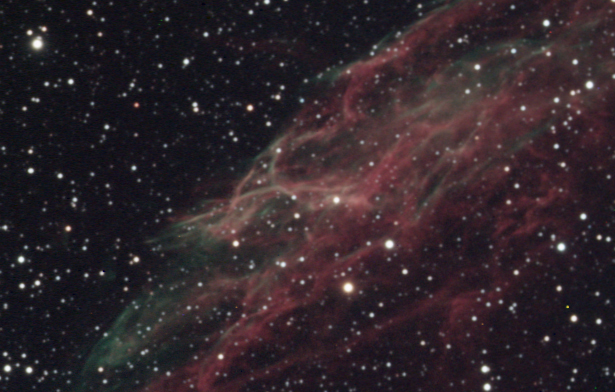
3 hour exposure of NGC6992 taken with the XM
• R=6X10 G=6X10 B=6X10 minutes
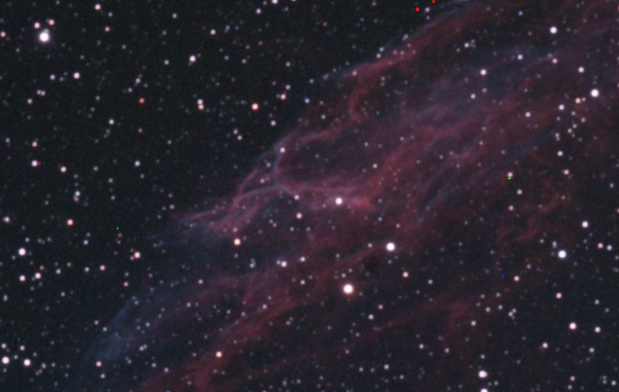
3 hour exposure of NGC6992 taken with the XCM
• 18 x 10 minutes

1 hour exposure of NGC6992 taken with the XCM
• 6 x 10 minutes
Exposure Time Comparison

|
3 hour exposure of NGC6992 taken with the XM |

|
3 hour exposure of NGC6992 taken with the XCM |

|
1 hour exposure of NGC6992 taken with the XCM |
Background Standard Deviation Measurements
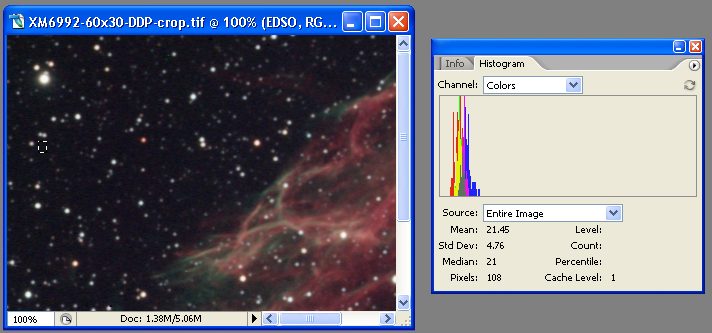
|
Three hour XM version. Note the Std. Deviation is close to the XCM version measured in the same background area. |
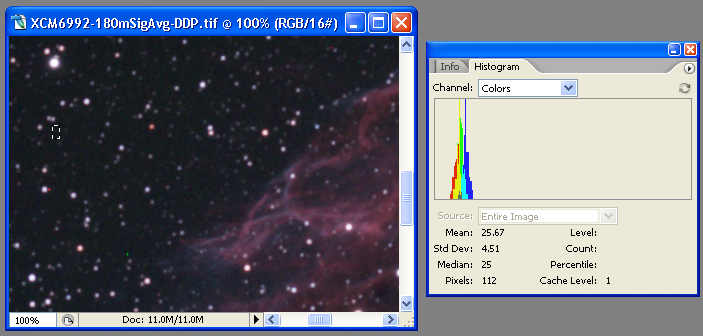
|
Three hour XCM version Std. Deviation sampled in same background area. |
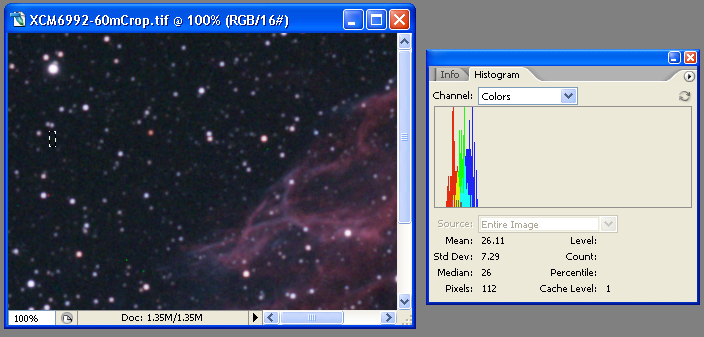
|
One hour XCM version. Note the high Std. Deviation value compared to the XCM 3 hour example. |
|
Exposure Times Comparison Summary These test results prove that the exposure times needed for the XCM to get a S/N close to that of the XM with filters is at least the same for a given object. The noisier image of the XCM with 1 hour of exposure time compared to the 3 hour examples demonstrates the need for longer exposures due to the lower QE of the Bayer sensor and its peaky bandwidth of the blue and green Bayer filters and to a smaller extent, the red filters compared to the broader band pass of the mono using astronomical R,G & B filters. |